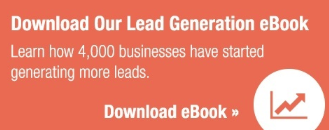What makes a good infographic?
It's a question that's been frequently discussed by graphic designers. We can all agree that like other pieces of art or graphic design, there are unique characteristics that can make one infographic stand out more than others. It's important to understand these characteristics because an effective infographic can help boost your social media reach and online marketing efforts.
So, back to our original question: what makes a good infographic? Here are a few common characteristics of best-in-class infographic design:
- Visually appealing. This is rather obvious, but it's nonetheless worth repeating. A successful infographic conveys a piece of information in a direct and understandable manner. This means minimal text, compelling visuals, user-friendly color schemes and a simple presentation. A truly awesome infographic can engage viewers even if the underlying data or messaging is poor, underscoring the need to work with a rockstar infographic designer. Which bring us to our next point.

- A useful and applicable message. The key to good content is providing users with something they can use, something interesting or applicable to their lives. The underlying message of your infographic must reflect this fact. For example, if you're a solar company, you may want to express the value of residential solar panels. One way to do this is to show reasons why other homeowners installed panels: low upfront costs, the goal of lower heating bills, the desire to be environmentally-friendly, etc. Displaying these reasons in a visually-stimulating infographic does two things in the eye of the viewer. One, it builds a connection - after all, who doesn't want to lower their heating costs? And two, it provides a compelling sales pitch in a unique format that doesn't appear to be explicitly "sales-y."
- Powerful data. An infographic is more compelling if the data is strong and applicable to the customers needs. That's one of the beautiful things about infographics: there's no shortage of data out there that can be transformed into a cool infographic. If you're an auto dealership, you can pull data from the trade press or, better yet, use your own data. This approach helps you "make news" and you can complement the infographic with a press release, blog post and social sharing.
- A pathway to customer engagement. Traditional ads usually have a bold "call to action" like “Click Here!” Or “Contact Us Today!” Inserting similar text in an infographic isn't recommended as it dilutes the power of the message. Nonetheless, you'll want viewers to act upon seeing the infographic, so you should envision what the desired action would be in advance. Let's take the aforementioned example on solar panels. Viewers can see that infographic and walk away saying, "Pretty cool - Stockton Solar seems to be the experts in solar power." The infographic introduces your brand to the customer at the onset of the purchasing funnel. But with a few tweaks to the copy and the infographic design, a powerful infographic testifying to the value of solar panels can get visitors to click on it and get taken to your website or a contact page.






